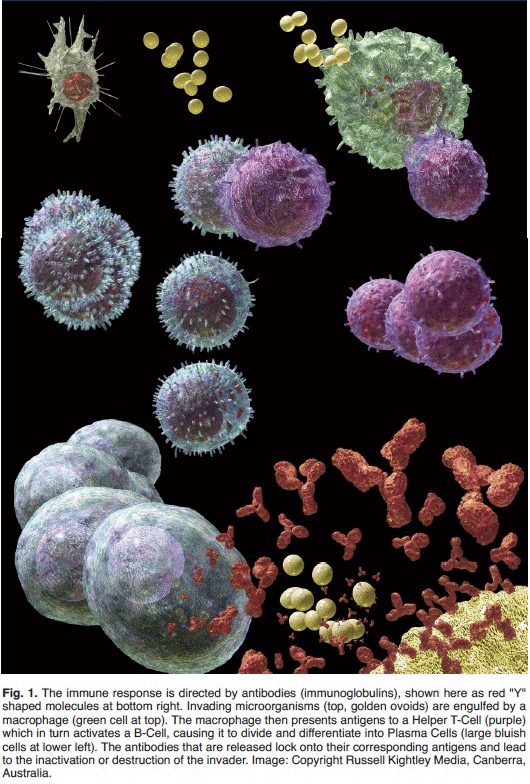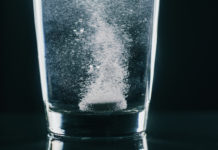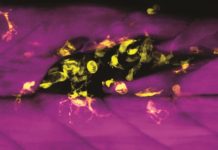By Jim English
In a study published in the Nov. 2008 Journal of Immunology, researchers shed light on the anti-viral and anti-aging benefits of Astragalus, a primary active ingredient in several advanced herbal formulas (Vital Cell, CardioPhase and OsteoPhase) and a mainstay of traditional Chinese medicine. In the paper a team of researchers from the UCLA AIDS Institute described how their work with a new drug derived from astragalus root not only reduces the aging process of immune cells, but also enhances how these cells respond to viral infections. The compound works by boosting production of telomerase, an enzyme that allows for the replacement of short bits of DNA, known as telomeres, that play a key role in cell replication, cancer and human aging.
Telomeres and Cell Division
Telomeres are short, repetitive pieces of DNA that act as unique molecular “caps” to protect the ends of chromosomes, much like the plastic tips that keep shoelaces from unraveling. Telomeres protect chromosomes from degradation by holding them together and preventing damage during normal cell division. Every time a cell divides the length of its telomeres shortens slightly. Over time, after a set number of cell division cycles (or “population doublings”), the telomeres are steadily ‘chipped away,’ until they reach a critical length known as the Hayflick limit. This so-called “end replication problem” limits the number of times a cell can correctly duplicate itself, and marks the cessation of normal cell division.
Animal studies suggest that this mechanism is responsible for accelerated cellular aging – each time the cell divides, errors in duplication accumulate, eventually resulting in cellular dysfunction and aging. Put another way, telomeres are believed to act as a cellular clock to regulate human lifespan.
Telomerase: Key to Healthy Cell Division
A key element in the maintenance of telomeres is an enzyme called telomerase. Telomerase plays a vital role in maintaining the length of telomeres and aids in stabilizing chromosomes during cell division. In the presence of telomerase, dividing cells can replace lost bits of DNA and even repair the cells to allow the process of healthy cell division to continue. Dr. Michael Fossel, a professor of clinical medicine at Michigan State University and a leading researcher on human aging, has predicted that the development of an effective telomerase therapy could help to extend human life indefinitely by resetting the genetic clock in healthy cells to relengthen telomeres and turn off runaway cell division in cancer cells. Dr. Fossel believes telomerase-based therapies for extending lifespan have the potential of allowing people to live far longer than the current limit of approximately 100 years, and with a body that looks and functions like that of a twenty-year-old.
Astragalus Compound Reverses Telomere Loss in Immune Cells
Like other kinds of cells, immune cells (Fig. 1) lose their ability to divide over time as the telomeres on their chromosomes become progressively shorter with each cell division. As a result, the disease-fighting ability of immune cells becomes compromised with age. In the new study the team at UCLA found that the compound, cycloastragenol, derived from Chinese Astragalus root, can prevent or slow the progressive loss of telomeres in key immune cells, potentially making it a key weapon in the fight against HIV and other viral diseases.

Previous studies have shown that injecting the telomerase gene into T-cells can keep the telomeres from shortening and enable them to maintain their HIV-fighting function for much longer. This gene-therapy approach, however, is not a practical way to treat the millions of people living with HIV.
For the present study, Rita Effros, an immunologist, and her colleagues at the UCLA School of Medicine focused on cycloastragenol to boost the immune system. The compound has previously been shown to enhance telomerase activity in other cell types.
After the researchers took killer T-cells from HIV-infected people and exposed them to the compound (renamed TAT2 for drug-patenting purposes) they found that it reduced telomere shortening, increased the T-cells’ ability to divide, and enhanced the cells’ antiviral activity. According to Effros, “It is beginning to look like telomerase is doing more than just keeping telomeres from getting too short. It seems to be mediating some antiviral mechanisms as well.”
In their paper, the researchers noted that, “The ability to enhance telomerase activity and antiviral functions of CD8 T-lymphocytes suggests that this strategy could be useful in treating HIV disease, as well as immunodeficiency and increased susceptibility to other viral infections associated with chronic diseases or aging.” The good news is that when the compound was added to tumor cells, it didn’t affect the amount of telomerase that was produced by the cells. Neither did it change the growth characteristics of immune cells that were incubated with a virus that can trigger cancer. “We are fairly confident at this point that TAT2 won’t enhance cancer development,” says Effros, although she cautions that further trials are needed to confirm this. Her confidence is also boosted by the fact that, “Astragalus is used in Chinese medicine without any obvious adverse effects.”
And in terms of more general tissue regeneration, Effros adds, “If TAT2 can do what the telomerase gene seems to do by keeping cells growing and functioning longer, maybe it could help in tissue regeneration approaches to aging.”
Patenting Natural Compounds Raises Serious Concerns
While the UCLA study provides important evidence for telomerase-based enhancement of immune function, it also showcases the tendency of Western companies to identify natural healing compounds and then chemically isolate, synthesize, modify and/or genetically engineer them to produce patentable (and highly profitable) pharmaceutical drugs. While this approach may lead to a therapeutically effective compound, it also increases the risks of introducing potentially dangerous side effects not seen in the original natural form. Take for example today’s popular statin drugs. Researchers originally investigated the natural, heart-healing properties of an age-old Asian culinary staple, Red Yeast Rice Extract. When the researchers successfully isolated and synthesized one of the active compounds found in Red Yeast Rice Extract – lovastatin – the result was an expensive drug that is accompanied by a host of dangerous and potentially deadly side effects not seen in its natural counterpart.
Additionally, while the UCLA paper has been hailed as a first-of-its-kind study to demonstrate an effective telomerase-based approach for enhancing immune function, the millions of Chinese who have relied on astragalus for thousands of years as a tonic to restore health and prevent a host of age-related degenerative disorders may beg to differ with this decidedly high-tech claim.
Astragalus
Astragalus (Radix Astragali) is one of the key active ingredients in Vital Cell®, advanced anti-aging herbal formula that has been shown to counter a host of common discomforts associated with human aging. In an early clinical trial involving 150 patients, aged 55 to 89 years, researchers measured a number of significant improvements after four weeks of daily use, including enhanced energy levels, reduced plasma viscosity and reversal of age-related capillary damage resulting in improved microcirculatory performance and enhanced organ health.
By restoring microcirculation, Vital Cell promotes internal organ function while speeding removal of cellular metabolic waste products, such as lipofuscin, that have been implicated in age-related degenerative health issues. Vital Cell has also been shown to support immune performance by increasing resistance to illness and improving overall health.
Anti-Aging Effects of Vital Cell®
Vital Cell has been shown to have excellent therapeutic actions on such age-related disorders as chest tightness, chest pains, insomnia, coughing, shortness of breath, heart palpitations, dizziness and lack of appetite. Vital Cell has also been shown to promote healthy blood circulation while supporting expansion of coronary arteries and arterioles of the brain and lungs, increasing blood flow in coronary vessels, improving vessel elasticity, enhancing T-cell immunity and promoting the synthesis and metabolism of proteins.
These findings indicate that Vital Cell is a valuable anti-aging discovery that can aid in reversing various disorders affecting the elderly, such as insufficient blood supply to the brain, coronary heart disease, chronic bronchitis, and hypoproteinemia, without the risk of adverse or toxic side-effects.
Summary
Astragalus is just one example of how nature has provided safe, effective methods of improving our health and quality of life. With the emergence of new, more virulent strains of viruses and bacteria the search for effective drugs to treat these diseases will continue unabated. Traditional herbal remedies such as Vital Cell confer a wide range of anti-aging and immunosupportive health benefits. In addition to lacking the negative side effects of pharmaceutical drugs, advanced herbal formulas such as Vital Cell tend to be inherently safer, more effective, and less expensive than their synthetic counterparts.
References
The study, published in the Journal of Immunology, is available online at www.jimmunol.org/cgi/content/full/181/10/7400.
















[…] (the cells that line arterial walls). Another one of my favourite additions in this smoothie is astragalus root powder. This herb boosts production of telomerase, an enzyme that replaces short bits of DNA (telomeres) […]
[…] aging and the condition of telomeres. As telomeres get chipped away at a steady pace, they reach the Hayflick Limit, a process that marks the stoppage of normal cell division as the number of times that cells can […]
[…] Ook kruiden en nutriënten zijn gelinkt aan de lengte van telomeren: vitamine D (8) (9), antioxidanten, omega-3 vetzuren (9b). Astragalus zou verlies van het enzym telomeres voorkomen. (10) […]
Thank you for this, i have been. Taking this for 20 years